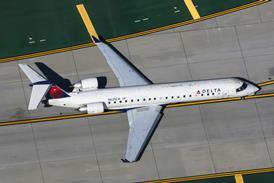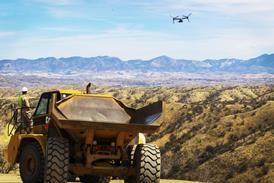Delta Air Lines chief executive Richard Anderson sees a need for more rail connections in “short-haul” markets in the USA, as rising fuel prices force mainline carriers to pull out of smaller markets.
“The input costs of the industry have gone up so much that it has impacted, particularly, small communities and, more and more, it’s really a look at what ways people can get to airports,” he says at the Global Business Travel Association (GBTA) annual convention in Los Angeles. “I think over the very long-term you’re going to see more rail in the short haul, if you will.”
While he does not define “short-haul”, Anderson cites the growing network of light rail and regional rail lines in the Minneapolis-St. Paul area as an example of connections in shorter markets.
The region opened a new 18km light rail line between central Minneapolis and central St. Paul in June, which complemented its existing lines to the Minneapolis-St. Paul International airport and to Big Lake. New rail lines and extensions are planned to Eden Prairie, Saint Cloud and Red Wing in Minnesota, all of which are less than 160km from the airport.
However, the planned network does not include cities further afield in the state like Bemidji and Thief River Falls that face losing their air service as airlines – particularly Delta – remove 50-seat regional jets in favour of larger, more fuel efficient models.
Anderson says that Delta needs an about 150% load factor on the small regional jets to turn a profit with oil above $100 per barrel.
The Atlanta-based carrier will have about 184 50-seaters, which include the Bombardier CRJ200s and Embraer ERJ154s, in its September schedule, he says.
Delta’s regional fleet included 312 small regional jets at the end of September 2012, before it began its programme to remove more than 200 of the types by the end of 2015. It is replacing the aircraft with 88 Boeing 717-200s with 110 seats and 70 Bombardier CRJ900s with 76 seats.
Anderson is one of the first US airline chief executives to see rail playing an important role complementing airline service. Only 23 airports are connected to rail systems in the USA – this will increase to 24 when a rail line to Dallas/Fort Worth International airport opens on 18 August – and only five of those to national rail lines.
Increased rail service in corridors under 800km (500 miles) could replace air service in those markets. Airlines have decreased service on these routes as demand has fallen and fuel costs have risen, for example Southwest Airlines recently pulled out of the 291km Oakland-Reno market after more than two decades on the route.
In addition, 23 small airports around the USA have lost service completely during the past decade, a recent Massachusetts Institute of Technology (MIT) report found.
Some short-haul markets, including those between Chicago and St. Louis, Seattle and Portland, and Washington DC and points in Virginia, have seen increased rail service due to state-led initiatives. However, a national network of high-speed rail corridors that could complement air service has failed to gain support in the US Congress beyond some improvements to the existing Boston-New York-Washington DC line and construction of initial segments of a planned Los Angeles-San Francisco line.
Rail complements air service in many markets in Europe and Asia. Airports like Frankfurt International, Paris Charles de Gaulle and Tokyo Narita all boast multiple rail connections to their respective regions and, in the case of the former two, to their national rail networks.
Source: Cirium Dashboard























